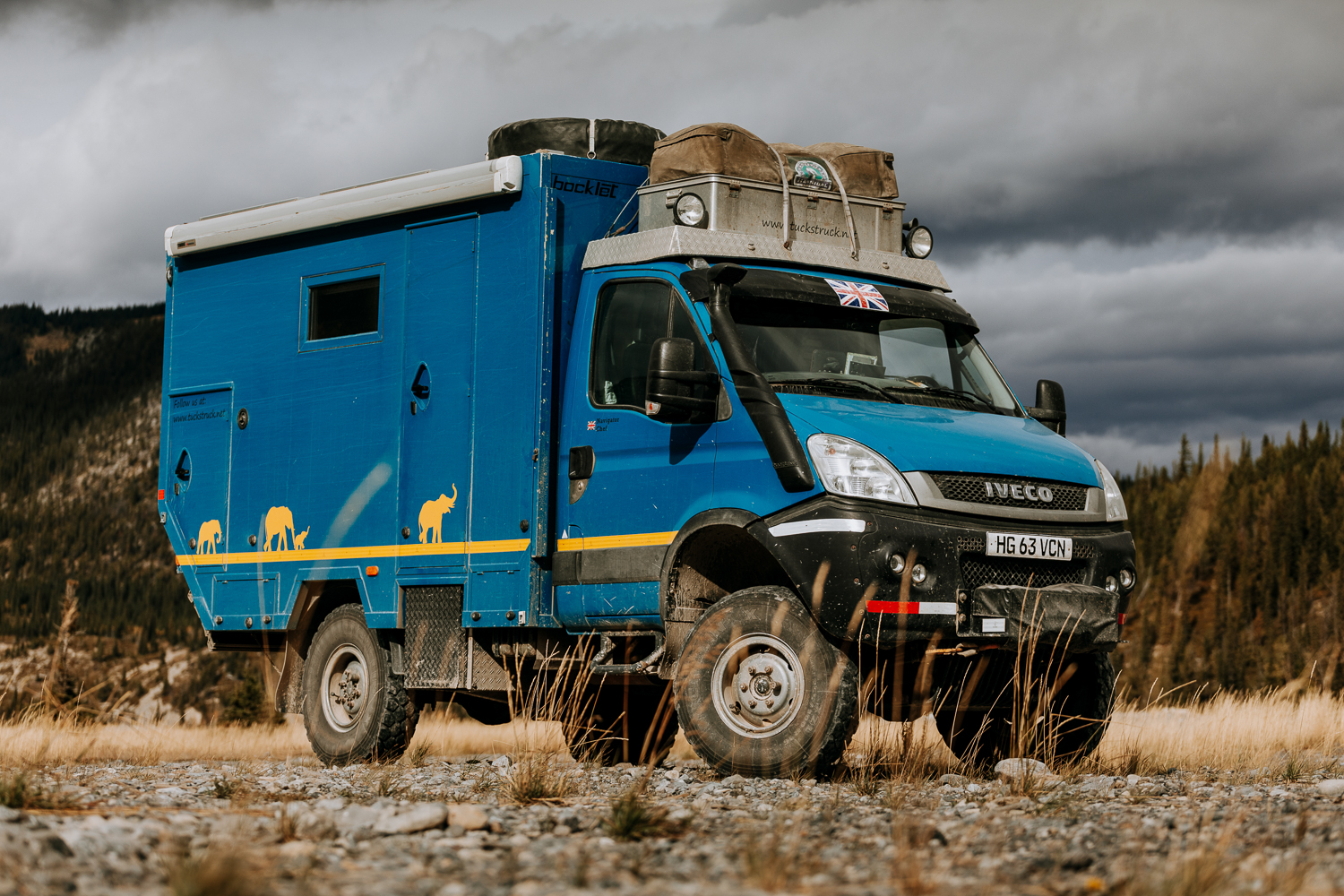Editor’s note: This article was originally published in Overland Journal’s Fall 2021 Issue.
Photography by Richard Giordano
We’re parked in a dry riverbed within the Ghost Public Land Use Area of Alberta, Canada, where Marcus and Julie Tuck have kindly opened their home to us for the evening. A chill autumn wind howls outside, but we’re sitting comfortably at the dinette table, hands wrapped around a hot cup of black tea. Julie fills us in on what constitutes a proper British cup—strong Yorkshire Gold tea leaves and milk, served with digestive biscuits and Fig Newtons (Marcus’s favorite).
When I discovered Marcus and Julie were traveling through our neck of the woods in the Canadian Rockies, I couldn’t pass up the chance to meet them. Marcus’s background as an aerosystems engineer left me intrigued. How did he create those custom controllers, gauges, and circuit boards to monitor the vehicle’s mechanical systems? I was also eager to meet Julie, who pens the couple’s website, Tucks’ Truck—a seven-year travelogue chronicling the couple’s full-time overland adventure through Africa, Europe, and the Americas. Of course, the concept of a comfortable vehicle also piqued my interest. It’s not every day you meet an IVECO Daily 4WD named Cuthbert.
Marcus and Julie Tuck claim to be “softies” when it comes to overlanding. Prior to their departure in 2014, a few holidays in Africa renting a Land Rover with a rooftop tent and some experience touring the Middle East in a Toyota Fortuner with a ground tent confirmed their suspicions. “Huge fun though camping is,” Julie explains, “it’s not really our idea of a lifestyle. We are not planning a trip; we are planning our open-ended future on the road. We won’t be escaping winter weather when it gets cold. This vehicle will be our home, our permanent, long-term home.”
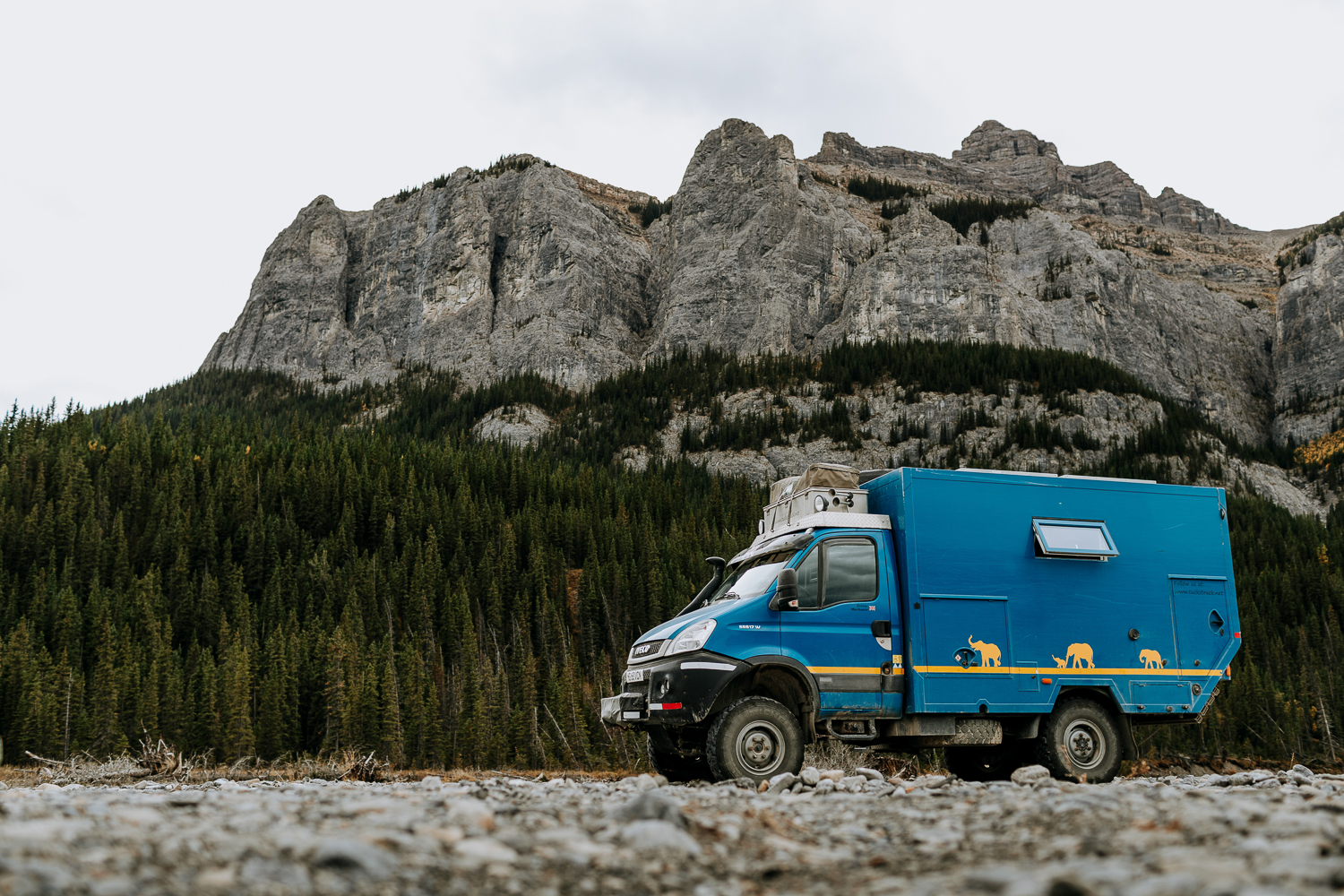
Back in 2013, Marcus and Julie were living in Doha, Qatar. Julie was working as a corporate construction/development lawyer while Marcus, after 25 years in the Royal Air Force in the UK, became a construction manager installing IT systems for the nearby airport. “We took quite a few holidays where we flew into Africa for two or three weeks and went on self-drive safaris,” Marcus explains. “We loved it but felt that we were just scratching the surface. We wanted to see Africa properly.”
While in Qatar, Marcus and Julie put enough money aside to give them the financial freedom to travel full time, but it wasn’t until Marcus’ friend suddenly passed away at the age of 50 that the couple decided to make the change. “We were like, wow, we haven’t done half the things we want to do with our lives,” Julie says. “You can keep working and saving and working and saving, but what do you end up with? So, we said, let’s do it while we’re young and healthy and see where it leads.”
To determine which vehicle was the best fit for them, some research and decision-making were in order. Africa was their starting point. “This is what we had in mind when choosing the vehicle,” Julie explains. “We didn’t exclude the possibility of continuing on afterward, but Africa was definitely the first destination.” As a result of their previous travels, Marcus and Julie were familiar with the roads and trails in Africa, and they knew they would require a rugged 4WD with high clearance and a relatively narrow track width. “The trails are typical two-track ruts cut into the ground and were all made by Land Rovers and Toyotas,” Marcus explains. “If you’re continuously trying to drive down a trail where one set of your wheels is making a fresh track all the time, your tires aren’t going to last very long, so we wanted our tires to be able to fit into those ruts.” In addition, the Tucks’ desire to travel remotely necessitated more food, water, and fuel storage. There was a balance to be had between their desire to travel in a small and maneuverable vehicle and one that could hold the weight of life’s creature comforts.
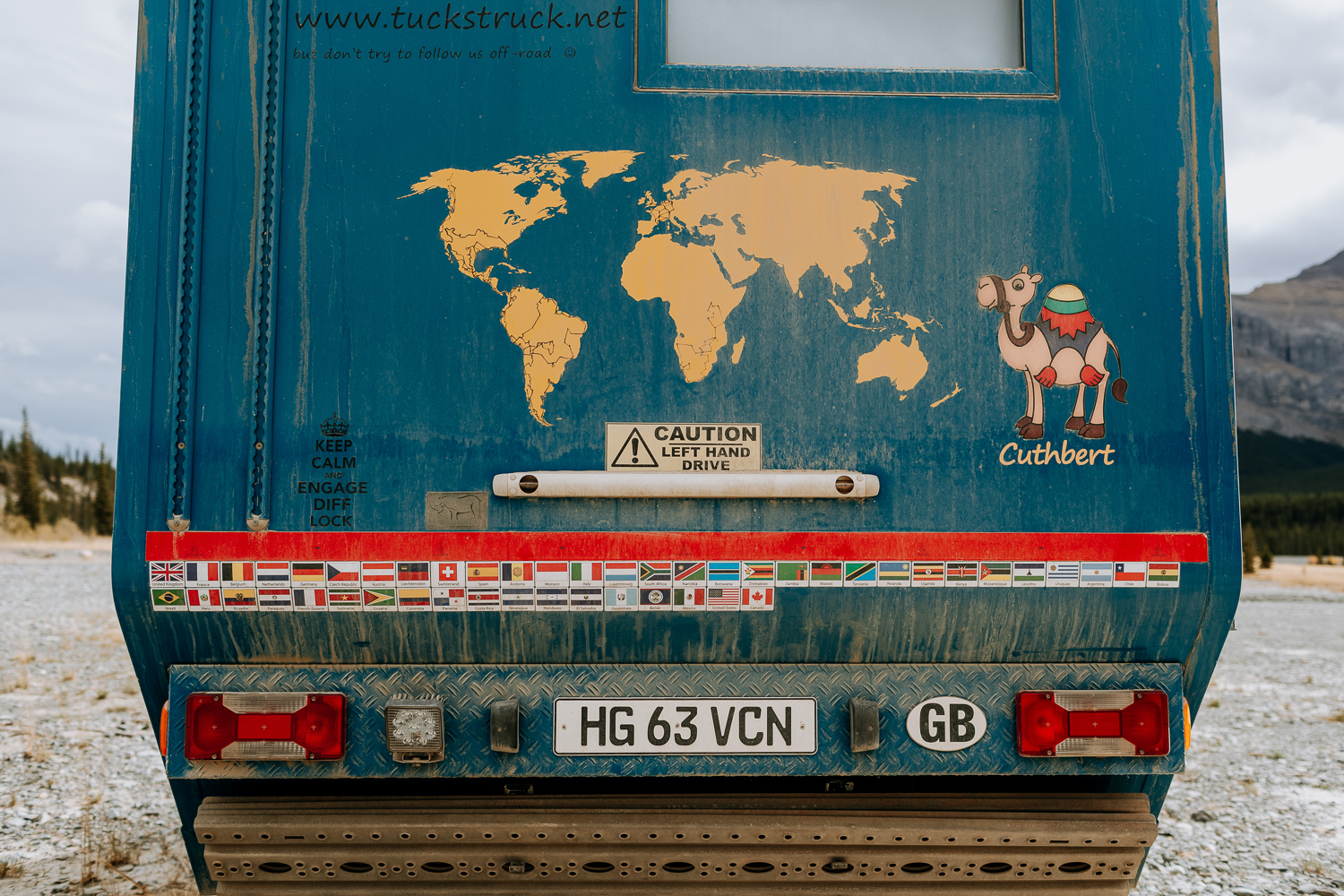
It’s easy for overlanders to underestimate the importance of payload. Marcus explains, “It’s a simple law of physics and engineering that any vehicle that is overloaded with life’s little luxuries will eventually fail through over-stressing, particularly if used for long periods of time in rough conditions.” So, they made a rough weight estimate that included all of their equipment and belongings, including tools, table and chairs, kitchen equipment, computers, fuel, water, food, bedding, towels, toiletries, and the list goes on. “Before we did this weighing-up, we’d been dreaming of bouncing across the African bush in an old Landy. But wait, bugger, it just won’t fit. Of course, we could have simply reduced our list of stuff, but that would have defeated that ‘comfort’ thing we were after.”
Next, the Tucks considered the inevitable shipping conundrum. “We originally started planning around fitting into a container and thought it was important,” Julie says. “We spent ages thinking about how we were going to fit a vehicle into a container. But the more we thought about it and spoke to a few people, we started questioning whether container shipping should dictate the vehicle build. We wondered, how long do you spend shipping your vehicle versus actually living in it? Do you want that two weeks of shipping to dictate your lifestyle for all of the other months and years that you’re living in the vehicle?” Marcus and Julie realized that there are risks to shipping both roll-on-roll-off and in a container and went with the larger vehicle. Over the past six and a half years, they’ve shipped four times. Julie’s advice? “Choose the vehicle you really want for living in, for driving in, and for the terrain you’ll be driving through.”
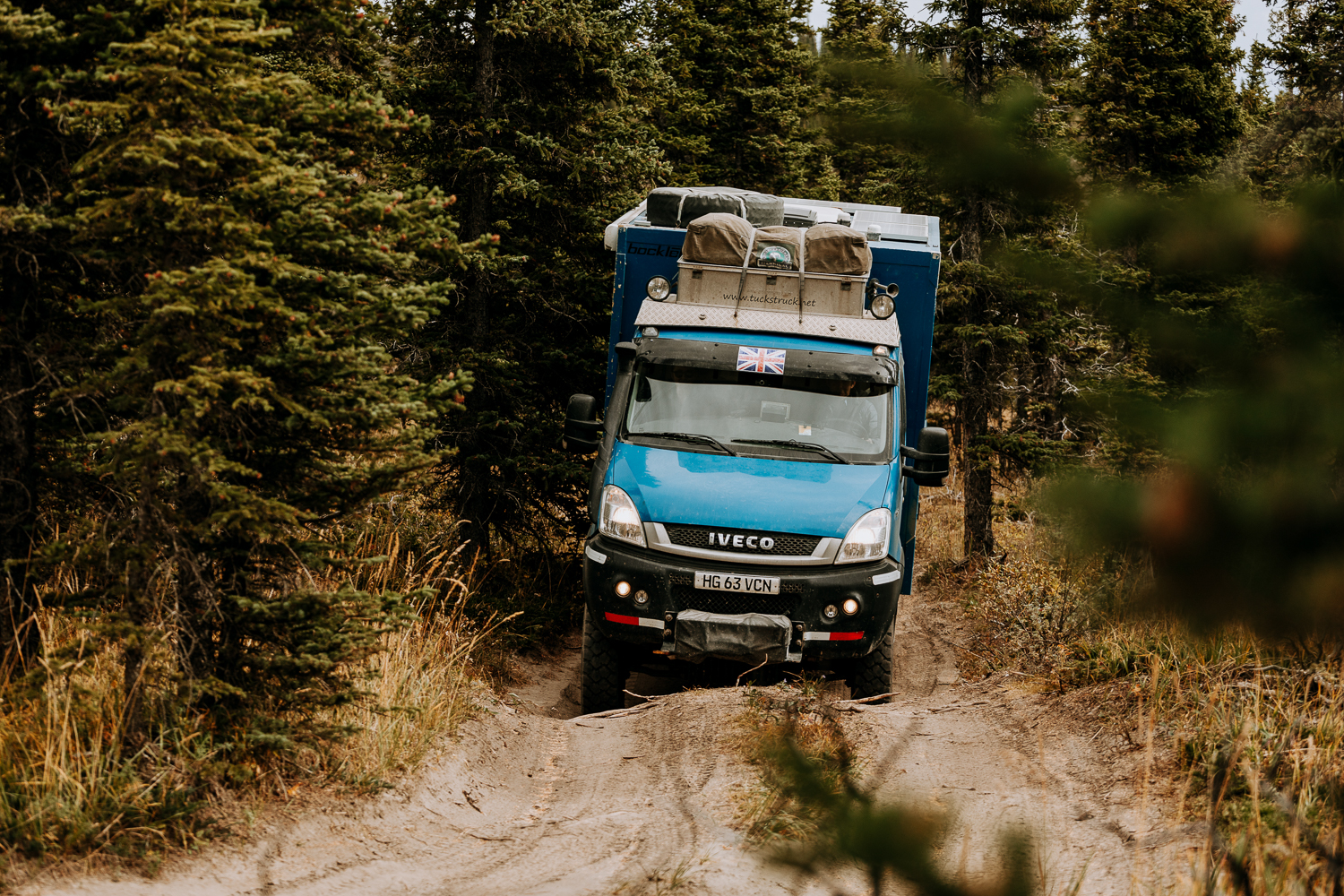
After Marcus and Julie weighed the pros and cons of container versus roll-on-roll-off shipping, they created their wish list. In order of approximate priority, this list included climate protection and temperature control, flexibility of parking locations, a “home on wheels” (not a vehicle with a bed), water and bathroom, power, and a kitchen. The Tucks made their vision a reality by selecting the mid-sized IVECO Daily 4×4 and Bocklet camper conversion.
Living comfortably during cold weather (or strong winds, storms, rain, hail, and snow, for that matter) was something the two prioritized during the vehicle build. Cuthbert is outfitted with a Truma Combi 230VAC/LPG system, a standard Bocklet feature for hot water and central heating. Windows are double-glazed, and the main roof hatch in the living cabin is thickly insulated to prevent heat loss.
The walls, roof, and doors of the living cabin are constructed from panels of 50-millimeter-thick insulating foam sandwiched between thin layers of plastic to minimize heat transfer. Even the storage space beneath the bed has its own hot-air feed from the heating system. Marcus explains its importance, “This means nothing gets frost or condensation damage, and there are no large temperature differentials between the sections of the cabin. This same heating vent blows a hot-air feed under the bed frame to ensure the mattress stays dry and warm, preventing condensation.” In addition, the entire gas, propane, water system, and leisure batteries lie within the heated cabin, preventing freezing and cracks in the pipes and tanks.
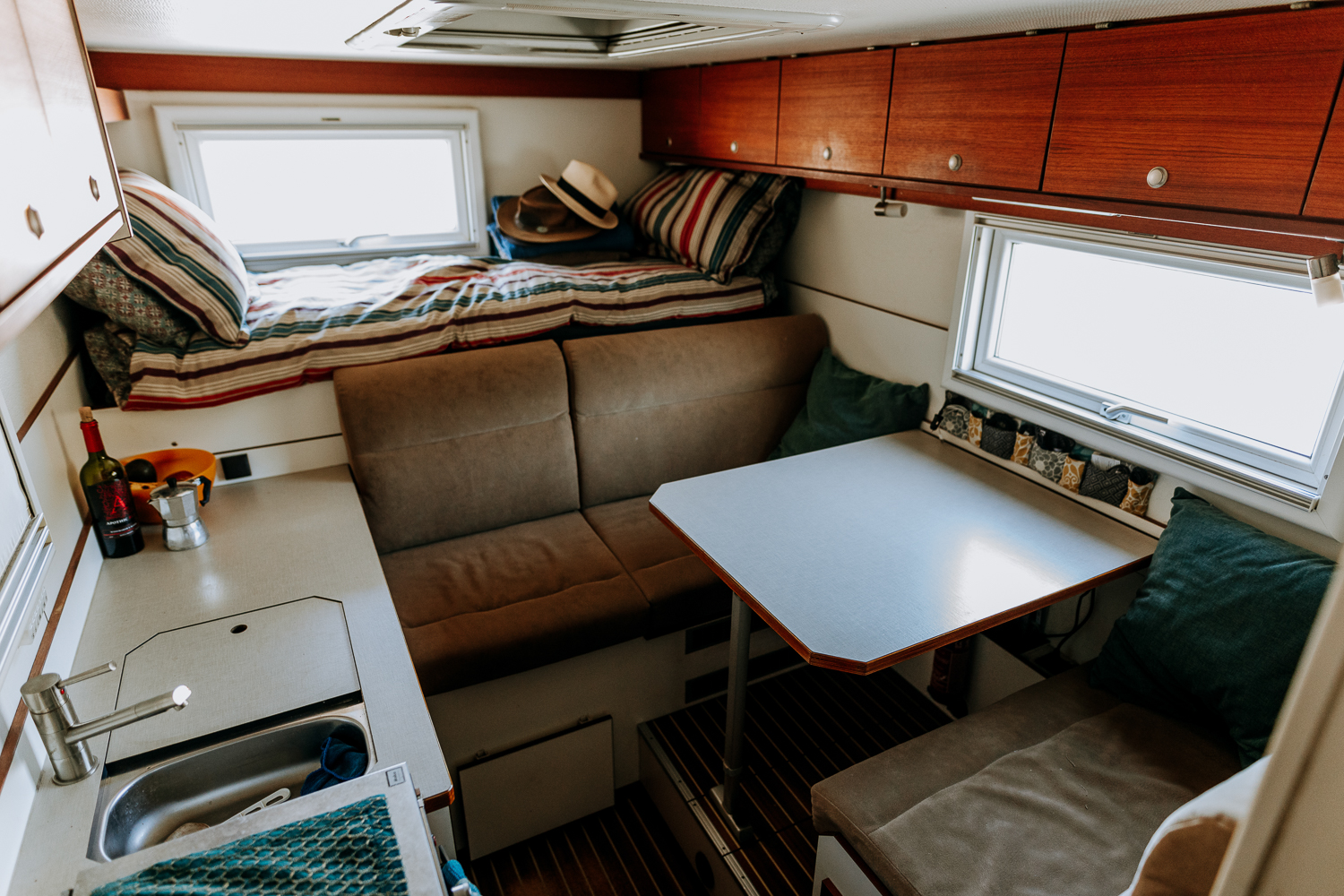
Another standard IVECO feature is a fuel filter heater which becomes activated by the vehicle’s engine control unit when the ECU detects a low fuel temperature. This fuel filter heater failed at elevations above 2,000 meters (6,500 feet), so Marcus solved this conundrum by installing his own manual override switch. Cuthbert is also outfitted with several optional extra-cold weather items such as a Webasto Engine pre-heater, heated crank-case vent pipe, heated windshield washer pump, heated seats, and heated wing mirrors. Initially considered an essential luxury, an efficient heating system proved paramount for the couple during overnight lows of -18°C on the Bolivian Altiplano and -31°C winter temperatures in the Canadian Yukon. This vehicle has clearly been put to the test—not merely surviving but thriving during a harsh Canadian winter in the Yukon is no small feat.
After climate protection and temperature control, a freshwater tank with a filtration system and a functioning bathroom were Marcus and Julie’s next priorities. Bocklet installed a 230-liter freshwater tank and a 140-liter grey water tank. The couple uses a small submersible 12-volt electric pump to fill up from natural water sources. This water filtration system is rigged up so that water flows firstly through a 5-micron sediment filter and secondly through a 0.5-micron activated charcoal filter. How far can 230 liters of water go? “We’ve found that 230 liters last around five to six days if both of us are showering every day and obviously much longer if we cut down on the showers,” Julie explains. This is easy to do, as the pair deemed their shower the least essential of their luxuries.
One important component of a self-contained home on wheels is a functioning toilet system. Eager to avoid trips to the loo at night where one is exposed to the cold, rain, or wildlife, the Tucks chose the Thetford C403 cassette toilet. These toilets typically require chemicals to break down waste and combat the smell. However, the use of these chemicals prevents one from emptying out into a septic tank, and the chemicals are not available in some parts of the world. To avoid this issue, Marcus and Julie specified a SOG vent that draws air in through the bowl and vents outside, reducing odor and increasing oxygen concentration in the waste tank, thus helping with breakdown. They can also safely empty their waste cassette into any toilet, septic tank, or long-drop toilet without harming the environment.
As the light fades outside, Julie flicks on the interior lights, pulls a pot of chili out of the fridge, and lights the propane-powered stovetop to warm our dinner for the evening. The lights, fridge, and appliances are powered by three 90-amp-hour Victron lithium iron phosphate (LiFePO4) batteries via five 80-watt Victron solar panels mounted to the roof. For the first four years of travel, Marcus and Julie powered their electronics with Victron 220-amp-hour AGM batteries. But they later found that in the batteries’ life cycle, energy management became an issue during the rainy season in the tropics, where “you have overcast clouds the whole time and don’t see the sun for days.” Julie further remarked, “It’s so hot outside that in order to keep cool, your fridge drains the batteries. Lithium batteries were a huge investment, but we couldn’t believe how much they transformed our daily life. Now we don’t have to worry about where we are going to get our next energy from.” They also effectively tripled their battery capacity and saved 40 pounds of weight in the process.
One of the build’s unique customizations is what Marcus and Julie have described as the “geekery.” In his spare time, Marcus enjoys tinkering with programmable circuit boards called Arduinos, which are used in combination with software to read electronic inputs and create both digital and analog outputs. When the IVECO factory electronics didn’t allow for engagement of the lockers under certain circumstances, Marcus decided to fabricate a system, thereby replacing the original computer to control the vehicle’s differential locks via an electronic touch display. From there, Marcus networked five additional Arduino computers throughout Cuthbert (which all communicate with one another) to capture a variety of information such as water use data, fresh water levels, battery monitor data, current inverter output, and much more. These are in addition to the manual controls. “From an overlanding point of view,” Marcus says, “I always want two systems. I always want a backup for everything. The advantage of a slightly bigger vehicle is that you can have a bit more redundancy built into it.”
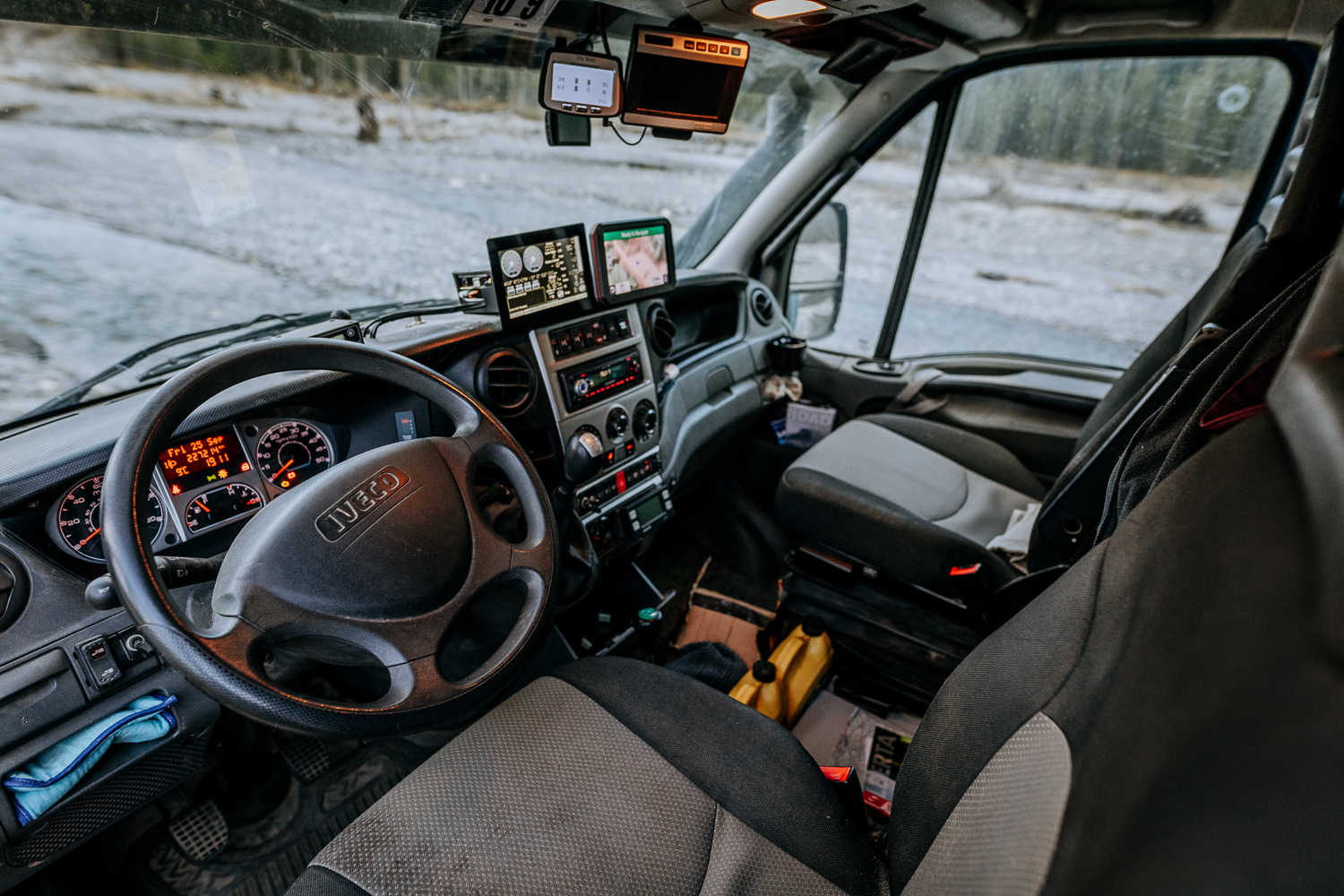
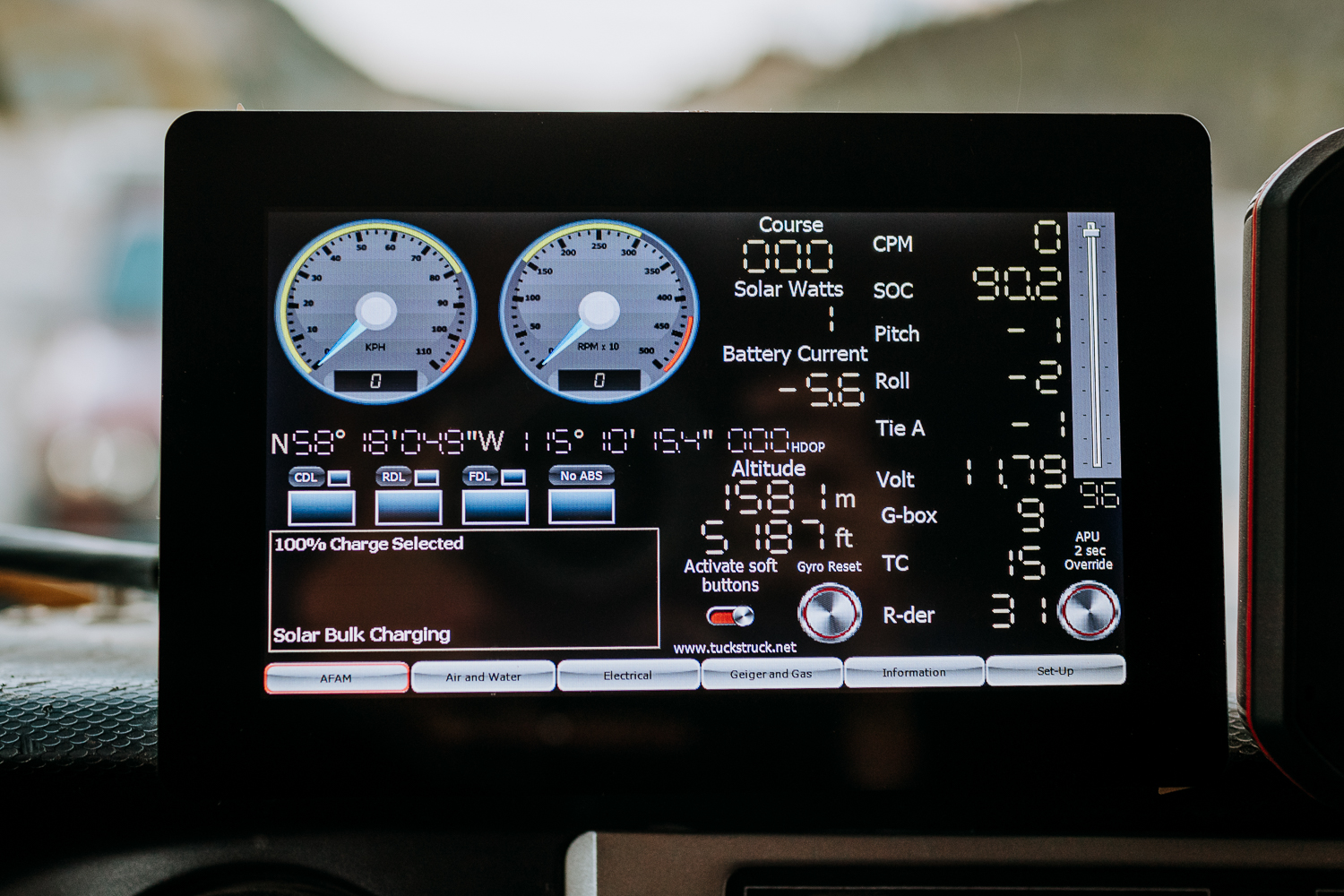
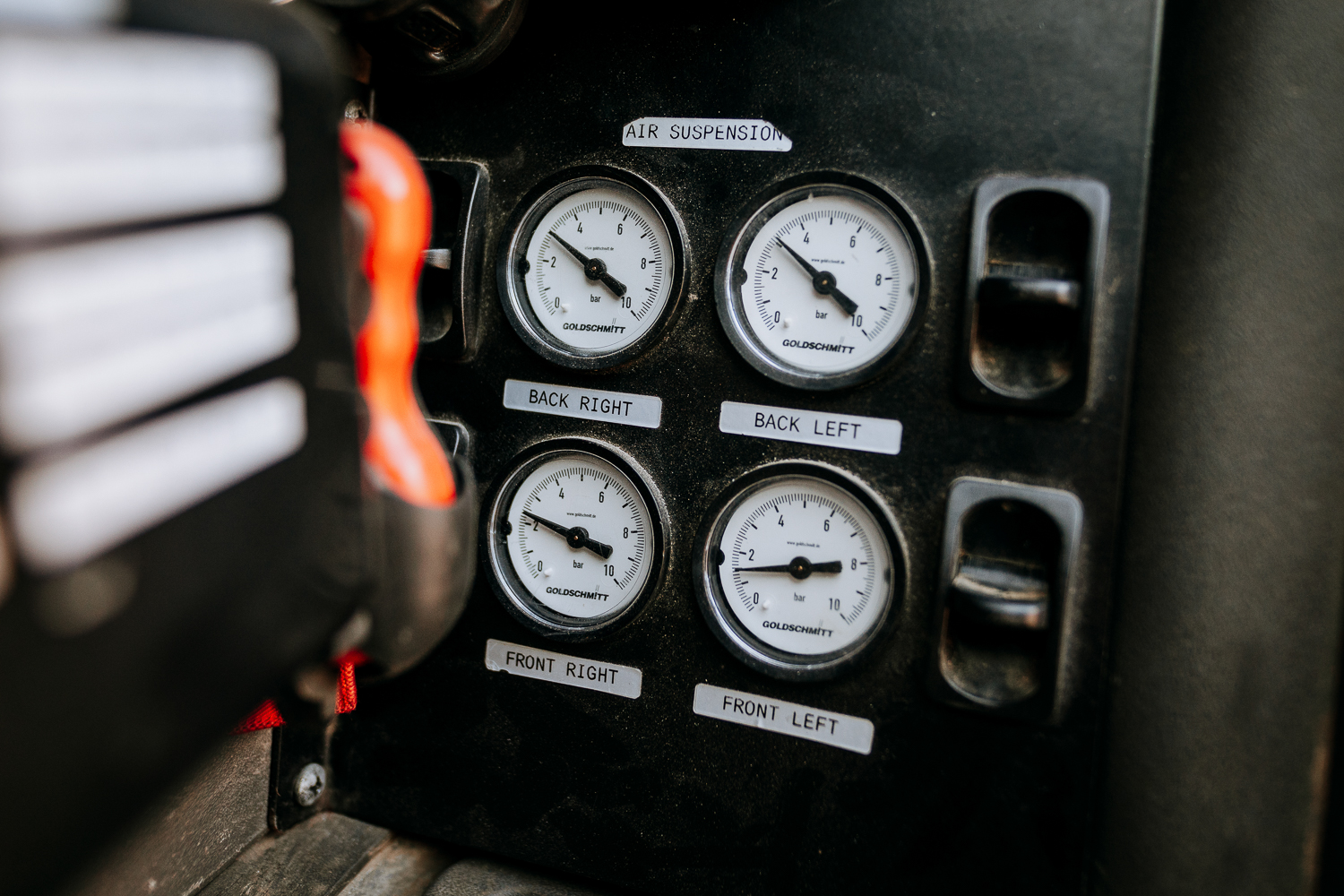
One thing I love about the Tucks’ vehicle build is that it is unabashedly them. From the truck cab that feels like a cockpit (perhaps an homage to Marcus’s aviation background?) to the yellow reflective graphics designed by Julie’s brother to the living systems and accessories, this vehicle just fits Marcus and Julie’s lifestyle. There are many inspiring builds out there, but at the end of the day, it’s about what you want. If there’s one takeaway from this build feature, it’s the quote that inspired this piece from the Tucks’ website, “Many overlanders claim to have the perfect vehicle and kit. But that’s for them. Everyone has different priorities, plans, and budgets. What do you want for your travels?”
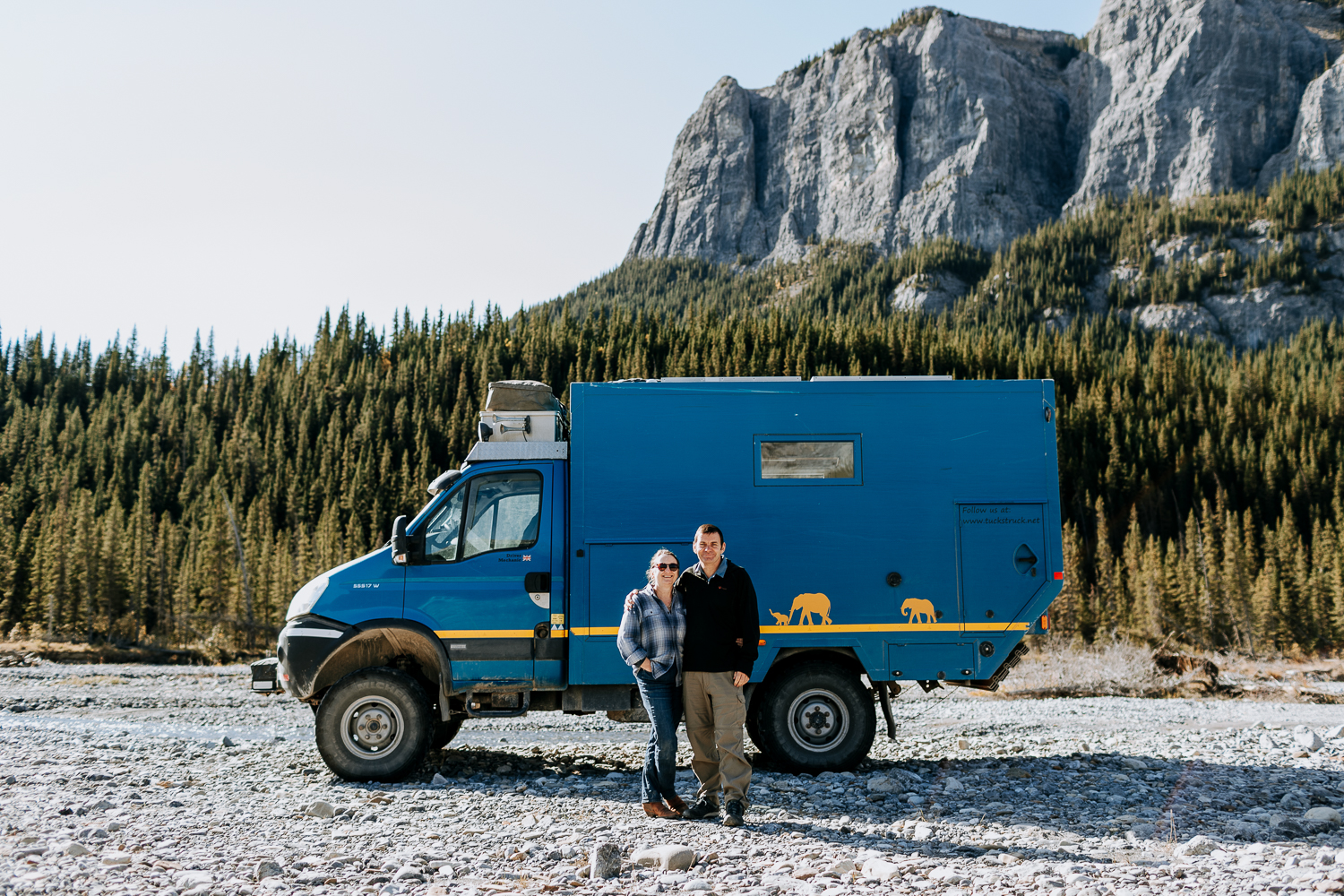
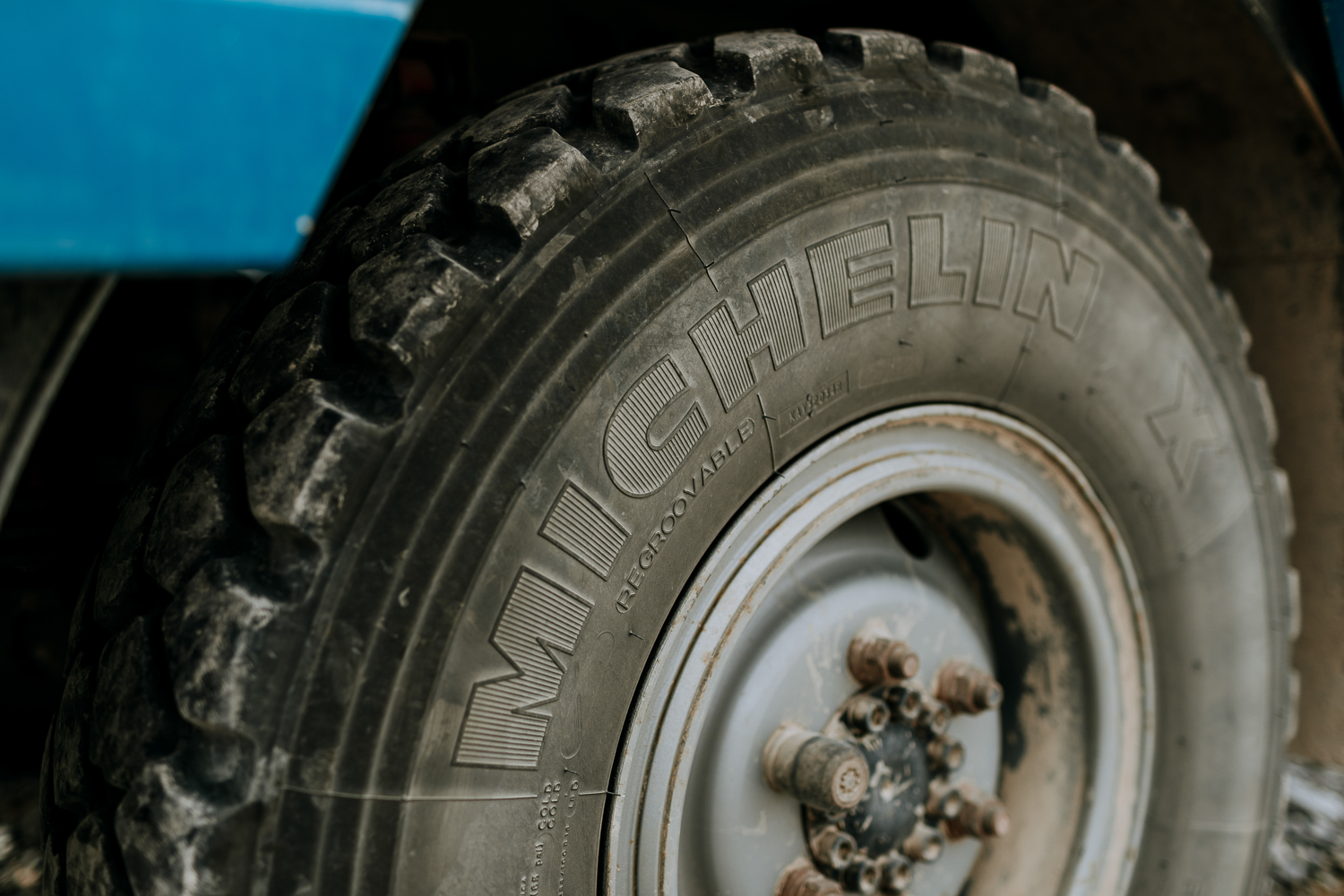
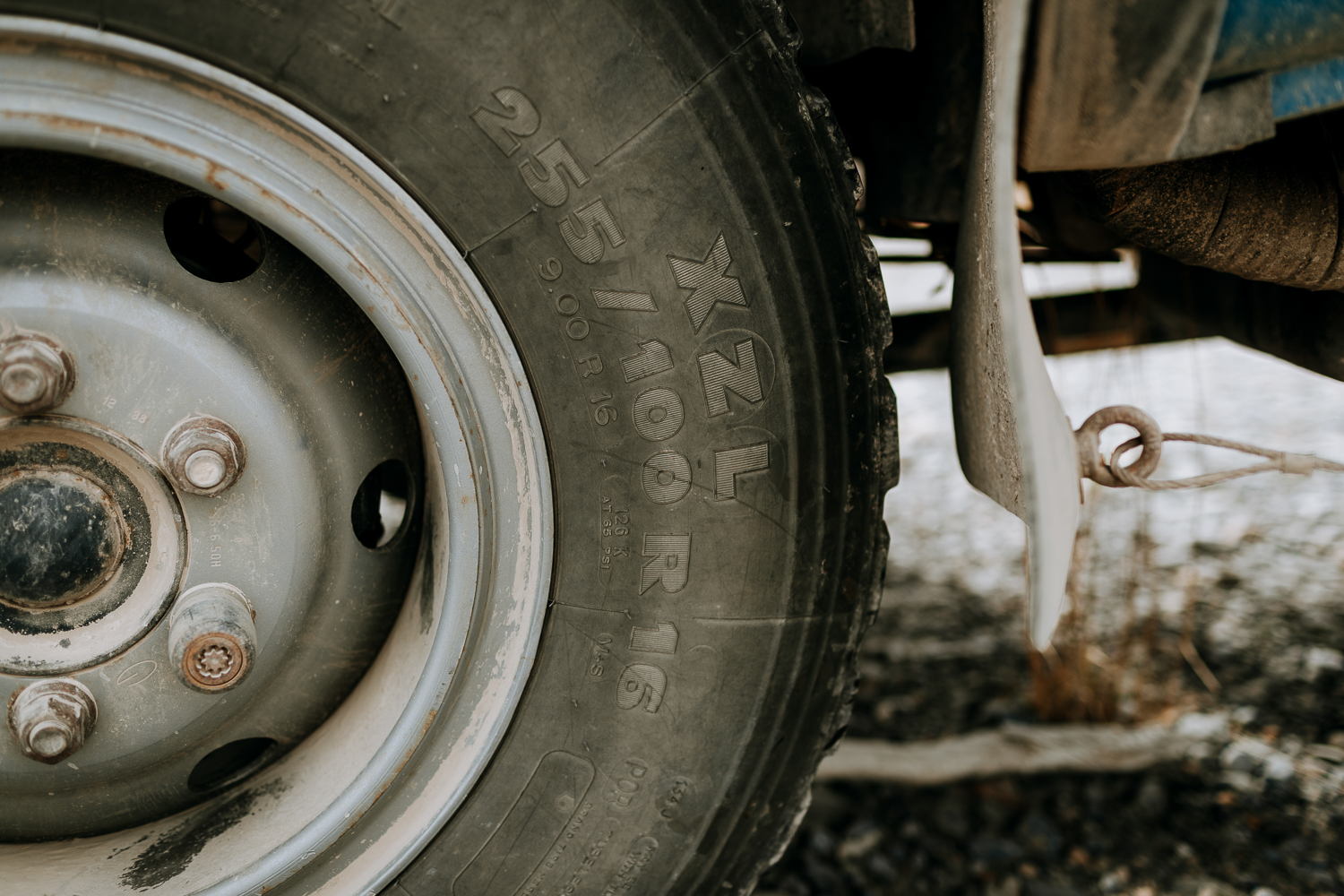
Specifications
2013 IVECO Daily 4×4 55S17W
DRIVETRAIN
Euro 5 EEV engine (enhanced environmental vehicle)
Six-speed manual transmission
Webasto engine coolant heater
Ridgeline snorkel
SUSPENSION AND DRIVETRAIN
Goldschmitt supplementary air suspension, front and rear
IVECO stock parabolic leaf springs, front and rear
Lockers, front/center/rear
WHEELS AND TIRES
Michelin 255/100R16 XZL tires
16-inch split rim wheels, factory military specification
RECOVERY AND ARMOR
Warn 16.5Ti winch, complete with 11-millimeter Marlow Dynaline Max synthetic rope
Sand ladders, German manufacturer, aluminum
AUXILIARY LIGHTING
Hella spotlights
LIVING SYSTEMS AND ACCESSORIES
Complete Bocklet cabin
Waeco Coolmatic MDC-90 fridge/freezer
Techimpex Mariner 2 Cooker
Victron BMV602 battery manager
Two Victron MPPT solar chargers
Three Victron 90-amp-hour lithium house batteries
Five Victron 80-watt solar panels
230-liter fresh water tank
140-liter grey water tank
Truma Combi heater, propane, and electric (230-volt, works on 110 volts as well)
Editor’s note: Marcus and Julie purchased a Starlink system in November 2021 and have documented their experiences with it in North America. To read more about their experience with Starlink in North America, visit our article: How to Find Internet While Overlanding.
Our No Compromise Clause: We carefully screen all contributors to ensure they are independent and impartial. We never have and never will accept advertorial, and we do not allow advertising to influence our product or destination.


